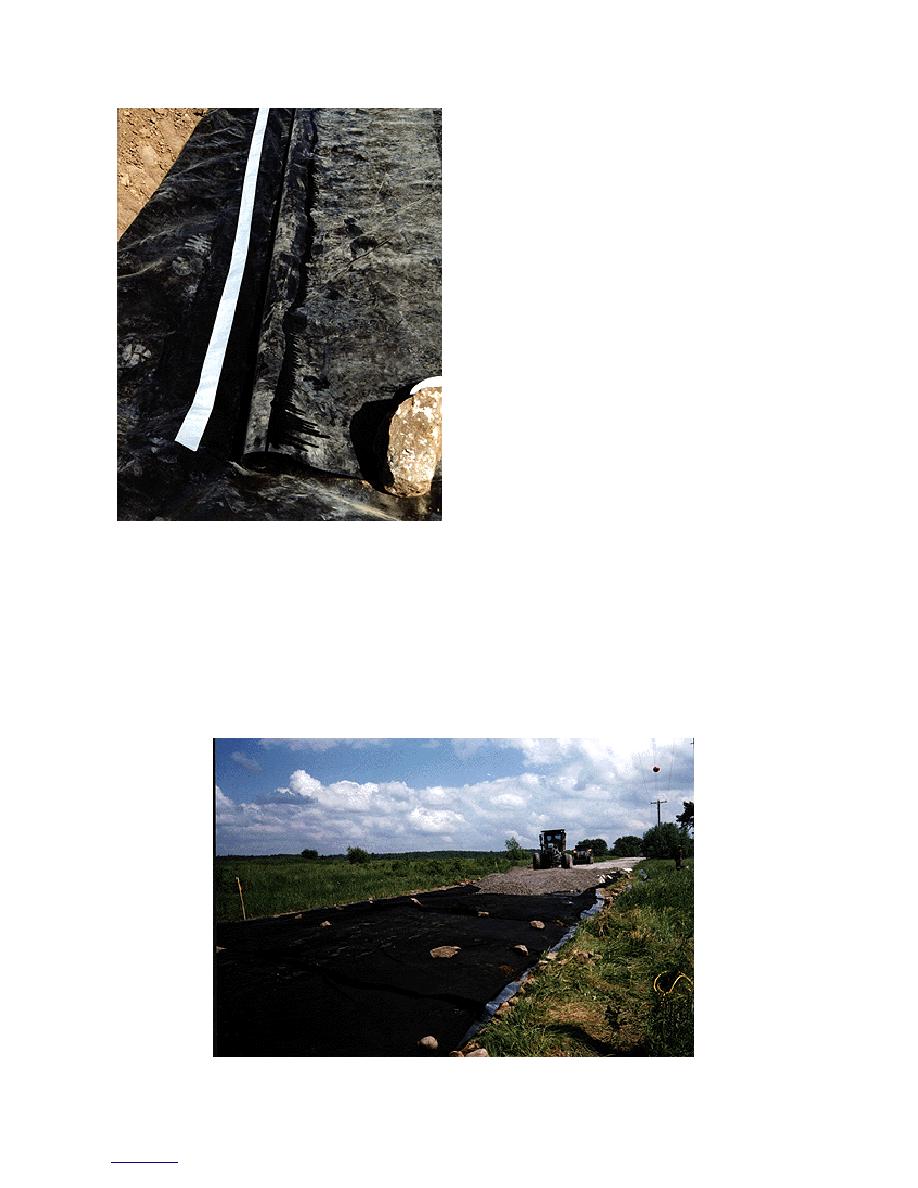
road surface. Sharp rocks and objects were re-
moved from the surface of the encapsulated soil.
The ends of the lower membrane were uncov-
ered and unfolded. The sides of the lower mem-
brane were folded over the top of the fill soil. The
top membrane was laid in place on the MESL. The
areas to be sealed were cleaned with isopropyl
alcohol, dried, and taped (Fig. 6).
A geotextile was placed on top of the mem-
brane for protection from the gravel layer. The
geotextile extended 3 m (10 ft) beyond the ends of
the MESL and extended 0.61 m (2 ft) beyond the
each other approximately 1.2 m (4 ft) along the
centerline of the MESL.
The gravel for the wearing surface was
brought to the site in 20-ton dump trucks. Once
again the trucks had to back to the edge of the
MESL to dump the gravel to avoid damaging the
membrane. The D-7 dozer and a bucket loader
were used to spread the gravel over the MESL. On
the final day of construction a grader was
brought from another construction site to spread
the gravel to a 152-mm (6-in.) lift (Fig. 7). The
Figure 6. Taping the lower membrane; the upper mem-
gravel was compacted by vehicle traffic.
brane is being cleaned.
Soil-lime mixing
truck was used to compact the soil in 127-mm
The soil and lime were mixed at Hoyt's Hill
and delivered to the MESL site. The soil is a lean
(6-in.) lifts. Final density and water content were
not measured.
clay that was stockpiled from a wetlands remedi-
After the MESL sections were filled and com-
ation project. The mixing area was approximately
pacted to 457 mm (18 in.), the D-7 and the bucket
30 m by 30 m (100 ft by 100 ft) and the site was
loader were used to smooth the surface. The sur-
approximately 61 m by 61 m (200 ft by 200 ft).
face was crowned to allow water to run off the
The mix area was graded smooth to eliminate
Figure 7. Spreading the gravel wearing course on the MESL.
8



 Previous Page
Previous Page
